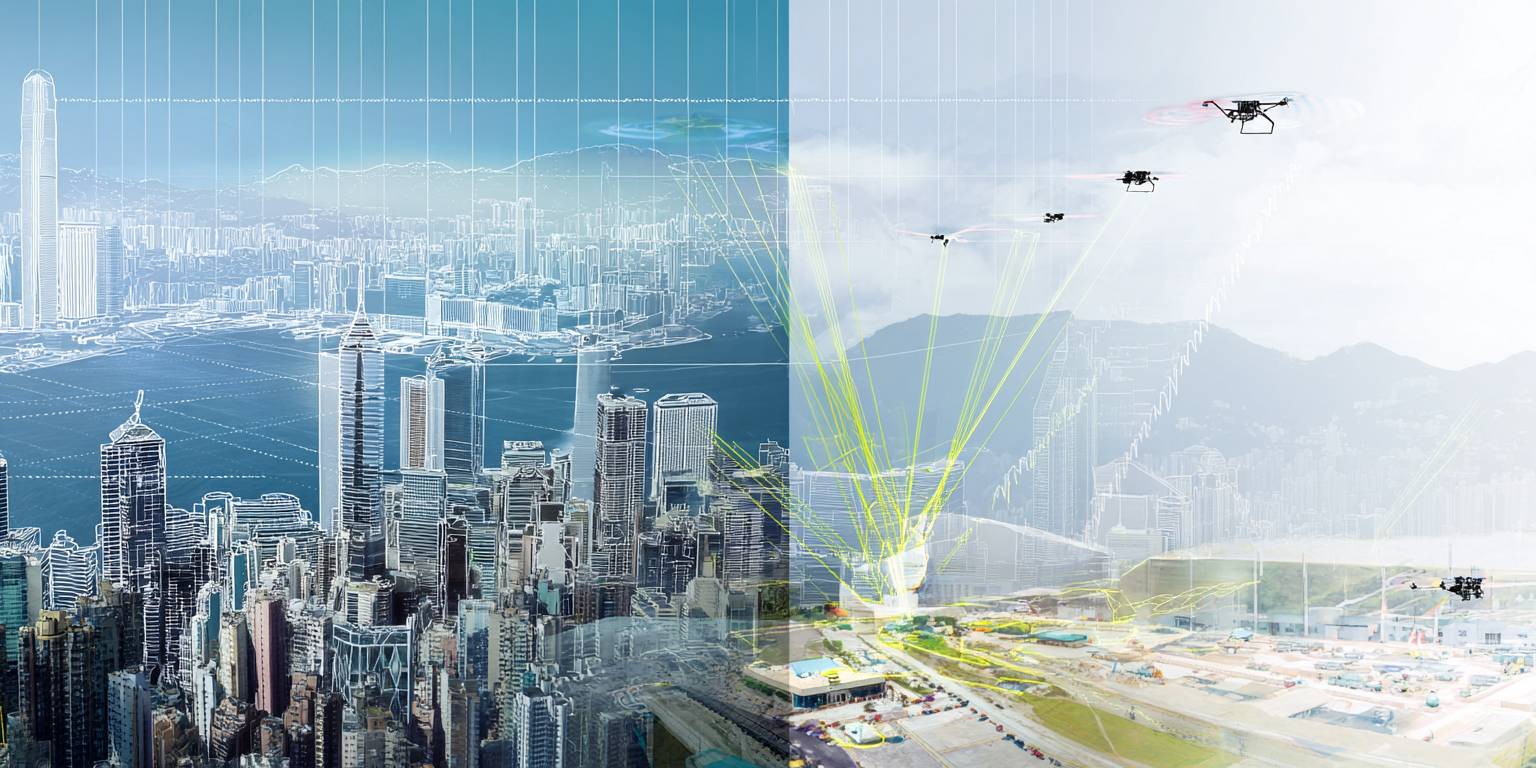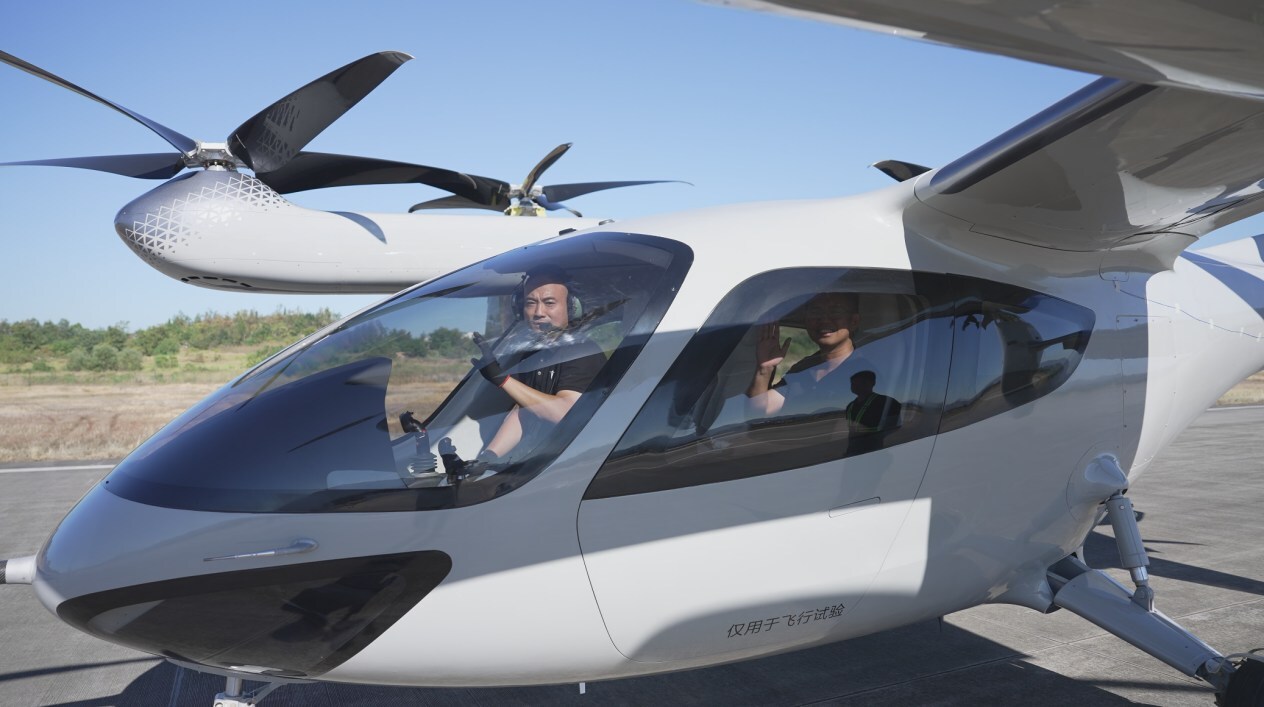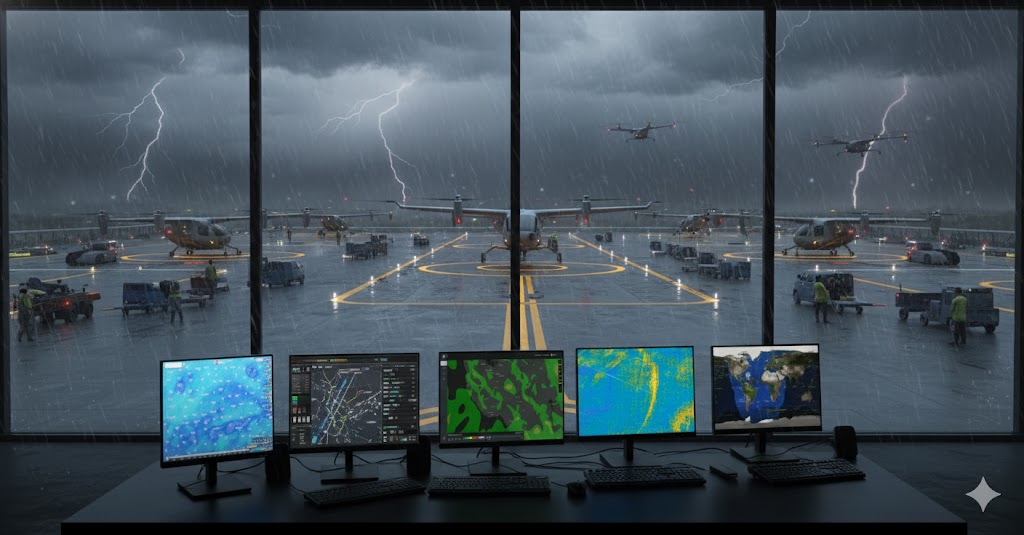As Advanced Air Mobility transitions from prototype demonstrations to commercial operations, staying current with essential publications becomes crucial for enthusiasts, students, and professionals seeking to understand the technical foundations, market dynamics, and operational challenges ahead in the Low Altitude Economy.
This comprehensive reading list encompasses the full spectrum of published literature on low-altitude economy, advanced air mobility, and eVTOL aircraft as of 2025, spanning technical foundations, market analysis, regulatory frameworks, and emerging applications. From foundational aircraft design principles and vertical flight theory to cutting-edge autonomous systems and urban air mobility integration, these carefully curated resources represent decades of accumulated knowledge across multiple disciplines, including aerodynamics, propulsion systems, battery technology, regulatory compliance, business development, and infrastructure planning.
Technical Foundations and Aircraft Design
The cornerstone of any serious study in this field begins with fundamental aircraft design principles. Daniel P. Raymer's "Aircraft Design: A Conceptual Approach, Sixth Edition" stands as the definitive guide, with updated chapters specifically addressing electric aircraft and unconventional configurations that form the basis of modern eVTOL development. This comprehensive text provides essential understanding of the design fundamentals that underpin all electric vertical takeoff and landing aircraft currently in development.
For those seeking a deeper technical understanding of electric propulsion systems, "Electric Aircraft Dynamics: A Systems Engineering Approach" by Ravi Vepa offers the first comprehensive systems-based overview of electric propulsion technology for aircraft. This text covers critical topics including low-weight battery technologies, plasma actuation for boundary layer control, and the integration of electric motor-driven propellers. The book's mathematical modeling techniques and PowerPoint resources make it particularly valuable for engineering students and professionals.
The newly revised "Fundamentals of Electric Aircraft" by Pascal Thalin provides an industry-focused perspective with updated illustrations and photographs throughout. This edition features tangible case studies spanning various aircraft segments from general aviation to large commercial aircraft, addressing the design constraints and development timelines necessary to achieve acceptable performance and maturity levels.
 |
Aircraft Design: A Conceptual Approach, Sixth Edition by Daniel P. Raymer • The definitive guide to aircraft design with updated chapters on electric aircraft and unconventional configurations • Includes comprehensive coverage of eVTOL design principles and electric propulsion systems • Essential for understanding the fundamentals that underpin modern eVTOL development |
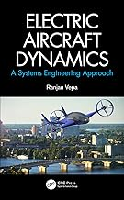 |
Electric Aircraft Dynamics: A Systems Engineering Approach by Ravi Vepa • First systems-based overview of electric propulsion technology for aircraft • Covers low-weight battery technologies, plasma actuation, and electric motor-driven propellers • Includes PowerPoint slides for instruction |
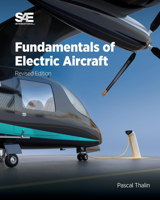 |
Fundamentals of Electric Aircraft, Revised Edition by Pascal Thalin • Comprehensive overview of electric aircraft development with new illustrations and photographs • Features tangible case studies across various aircraft segments from General Aviation to Large Aircraft |
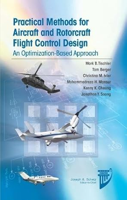 |
Practical Methods for Aircraft and Rotorcraft Flight Control Design • Advanced control systems design for vertical flight vehicles • Essential for understanding autonomous flight capabilities |
Vertical Flight Theory and Rotorcraft Aerodynamics
Understanding the principles of vertical flight remains fundamental to the development of eVTOL aircraft. Wayne Johnson's comprehensive "Helicopter Theory" serves as the essential 1,089-page reference covering all aspects of vertical flight, from basic principles to advanced mathematics of rotating systems. This text provides the theoretical foundation necessary for understanding rotorcraft aerodynamics that directly applies to eVTOL design challenges.
J. Gordon Leishman's "Rotorcraft Aeromechanics" complements Johnson's work with advanced treatment of hover, vertical flight, forward flight, wake analysis, and performance characteristics. The text includes comprehensive chapters on unsteady aerodynamics, computational methods, and noise generation—all critical considerations for eVTOL aircraft operating in urban environments. Leishman's additional work, "Introduction to Aerospace Flight Vehicles," provides a broader foundation with specific sections on vertical flight and stability control.
For practitioners seeking to understand flight dynamics across the transition from hover to forward flight, "Helicopter Flight Dynamics: Including a Treatment of Tiltrotor Aircraft, 3rd Edition" offers detailed analysis of transitional flight regimes that many eVTOL configurations must navigate.
 |
Helicopter Theory by Wayne Johnson • Comprehensive 1,089-page reference covering all aspects of vertical flight • Essential foundation for understanding rotorcraft aerodynamics applicable to eVTOL design • Covers vertical flight, forward flight, performance, design, and mathematics of rotating systems |
 |
Practical Methods for Aircraft and Rotorcraft Flight Control Design • Advanced control systems design for vertical flight vehicles • Essential for understanding autonomous flight capabilities |
 |
Rotorcraft Aeromechanics Rotorcraft Aeromechanics by J. Gordon Leishman • Advanced text covering hover, vertical flight, forward flight wake, and performance analysis • Includes chapters on unsteady aerodynamics, computational aerodynamics, and noise • Comprehensive treatment of blade motion, dynamics, and flight control systems |
 |
Helicopter Flight Dynamics: Including a Treatment of Tiltrotor Aircraft, 3rd Edition • Detailed analysis of helicopter and tiltrotor aircraft flight characteristics • Relevant for understanding transitional flight regimes in eVTOL aircraft • Available through Vertical Flight Society at a member discount |
| The Helicopter: Thinking Forward, Looking Back by J. Gordan Lishman • Historical perspective on rotorcraft development • Provides context for current eVTOL innovations • Available at member discount through VFS |
|
 |
Principles of Helicopter Aerodynamics, 2nd Edition • Advanced treatment of rotorcraft aerodynamics • Essential for understanding the theoretical foundations of vertical flight |
Urban Air Mobility Systems Integration
The complexity of urban air mobility extends far beyond individual aircraft design to encompass entire transportation ecosystems. "Urban Air Mobility: Intelligent, Safe and Sustainable Systems for Future Transportation" by Vishnu Kumar Kaliappan addresses these system-level challenges, focusing on modeling, analysis, navigation, traffic control, and battery efficiency optimization. This text explicitly addresses artificial intelligence techniques for safety and security in UAM operations, reflecting the autonomous capabilities being developed across the industry.
"Introduction to Unmanned Aircraft Systems, Third Edition" by R. Kurt Barnhart provides essential coverage of UAS fundamentals, including sensors, controls, automation, regulations, and safety procedures. The updated edition features critical chapters on cybersecurity, artificial intelligence applications, and unmanned traffic management systems, which will be essential for large-scale eVTOL operations.
Cambridge University Press's "Electrified Aircraft Propulsion: Powering the Future of Air Transportation" offers a multidisciplinary perspective combining expertise from leading researchers across power systems, materials science, superconductivity, thermal management, and battery chemistry. This text provides a clear roadmap identifying technology gaps between current capabilities and future performance requirements.
 |
Urban Air Mobility: Intelligent, Safe and Sustainable Systems for Future Transportation by Vishnu Kumar Kaliappan • Comprehensive resource for engineers developing intelligent UAM systems • Addresses challenges in modeling, analysis, navigation, traffic control, and battery efficiency • Covers artificial intelligence techniques for safety and security in UAM operations |
 |
Introduction to Unmanned Aircraft Systems, Third EditionIntroduction to Unmanned Aircraft Systems, Third Edition by R. Kurt Barnhart • Surveys UAS basics from sensors, controls, and automation to regulations and safety • Covers civilian applications with updated policy and regulation information • Includes chapters on cybersecurity, artificial intelligence, and unmanned traffic management |
 |
Electrified Aircraft Propulsion: Powering the Future of Air TransportationElectrified Aircraft Propulsion: Powering the Future of Air Transportation (Cambridge University Press) • Multidisciplinary text combining expertise from leading researchers • Covers power systems, materials science, superconductivity, thermal management, and battery chemistry • Provides clear roadmap for technology gaps and future research areas |
 |
Aerodynamics for Aviators (Hardcover)Aerodynamics for Aviators (Hardcover) by Various Authors • Collegiate-level textbook covering fundamental aerodynamic principles • Essential for understanding the physics underlying eVTOL flight operations • Includes stability, performance, limitations, and maneuvering flight concepts |
 |
Autonomous Flying Robots by Kenzo Nonami, Farid Kendoul, Satoshi Suzuki, Wei Wang, Daisuke Nakazawa • Practical guide to autonomous flight systems applicable to eVTOL development • Covers control systems, navigation, and automation technologies • Relevant for understanding the autonomous capabilities being developed for AAM |
Drone Technology and Autonomous Systems
Current drone operations provide valuable insights into the operational realities that larger eVTOL aircraft will face. Brian Halliday's "Drones: The Complete Collection" offers practical guidance across three comprehensive volumes covering professional drone operation, advanced flight techniques, and regulatory compliance. This collection offers practical operational knowledge that informs broader eVTOL development programs.
"Autonomous Flying Robots" by Kenzo Nonami and colleagues delivers practical guidance on autonomous flight systems directly applicable to eVTOL development. The text covers control systems, navigation algorithms, and automation technologies that form the foundation of the autonomous capabilities being integrated into advanced air mobility vehicles.
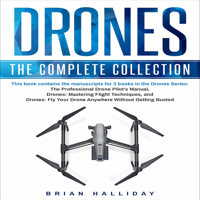 |
Drones: The Complete CollectionDrones: The Complete Collection by Brian Halliday • Three-book collection covering professional drone operation, flight techniques, and regulatory compliance • Includes "The Professional Drone Pilot's Manual," "Mastering Flight Techniques," and legal operation guidance • Practical resource for understanding current drone operations that inform larger eVTOL development |
 |
Introduction to Aerospace Flight VehiclesIntroduction to Aerospace Flight Vehicles by J. Gordon Leishman • Broad-based introduction to aerospace field with emphasis on technical content • Covers history of aircraft and aviation, stability and control, and vertical flight • Available as open-access eTextbook with interactive features and self-assessment tools |
Industry Perspectives and Market Analysis
Understanding the broader context of technology development requires engaging with both historical perspectives and current market analysis. J. Stores Hall's "Where Is My Flying Car?" has become essential reading in Silicon Valley, examining the technological progress factors that accelerate or impede the development of flying cars. This cult classic provides unique insights into the technological barriers that eVTOL developers must overcome.
Andrew Glass's "Flying Cars: The True Story" offers historical context by examining past attempts to build hybrid air-ground vehicles. This engaging account combines history, biography, technology, and humor, providing valuable lessons from past efforts that inform current development programs.
 |
Where Is My Flying Car?Where Is My Flying Car? by J. Stores Hall • Examines technological progress and factors that slow or prevent flying car development • Essential reading for understanding eVTOL aircraft development challenges • Cult classic in Silicon Valley providing unique perspective on technological barriers |
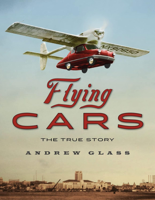 |
Flying Cars: The True StoryFlying Cars: The True Story by Andrew Glass • Historical account of attempts to build hybrid air-ground vehicles • Provides context for current eVTOL development by examining past efforts • Combines history, biography, technology, and humor with period photographs |
White Papers, Market Research and Business Intelligence
Current market projections indicate substantial growth potential for the sector. Morgan Stanley's research "eVTOL/Urban Air Mobility TAM Update: A Slow Take-Off, But Sky's the Limit" projects a $1 trillion market by 2040, potentially reaching $9 trillion by 2050, while acknowledging revised adoption timelines due to regulatory challenges. McKinsey's "Perspectives on Advanced Air Mobility" offers complementary analysis, projecting 1,000 aircraft and 20,000 flights per day by 2030, while examining the requirements for battery technology and certification processes.
Roland Berger's study, "Advanced Air Mobility on the Runway to Commercialization," offers a detailed market segmentation analysis that covers use cases ranging from urban air mobility to regional air transport, providing insights into infrastructure requirements and business model development. Deloitte's "Advanced Air Mobility: Disrupting the Future of Mobility" examines current market conditions and certification timelines, focusing on community benefits and commercial viability targets for 2024.
| eVTOL/Urban Air Mobility TAM Update: A Slow Take-Off, But Sky's the Limit • Updated market projections showing $1 trillion market by 2040, potentially $9 trillion by 2050 • Revised adoption timelines considering regulatory challenges • Essential for understanding investment landscape and market potential |
| McKinsey AnalysisMcKinsey Analysis: "Perspectives on Advanced Air Mobility" • Comprehensive analysis of eVTOL market development and certification challenges • Covers battery technology requirements, regulatory framework, and operational considerations • Projects 1,000 aircraft and 20,000 flights per day by 2030 |
| Roland Berger StudyRoland Berger Study: "Advanced Air Mobility on the Runway to Commercialization" • Detailed analysis of AAM market segments and certification requirements • Covers use cases from UAM to regional air transport • Provides insights into infrastructure requirements and business models |
| Deloitte ReportDeloitte Report: "Advanced Air Mobility: Disrupting the Future of Mobility" • Examines current state of AAM market and certification timeline • Analyzes community benefits, cost-effectiveness, and productivity improvements • Focuses on 2024 certification targets and commercial viability |
Educational Resources and Professional Development
NASA's Advanced Air Mobility STEM Toolkit provides educational resources directly related to NASA's ongoing research with air taxis and drones. This cross-curricular content includes coding, mathematics, energy, and environmental considerations with hands-on STEM activities for understanding AAM principles.
The AIAA and Vertical Flight Society jointly offer an "Electric VTOL Aircraft Design: Theory and Practice" online course featuring pioneering experts from industry and academia. This comprehensive 5-week program covers design constraints, battery systems, motor technologies, acoustics fundamentals, and cost estimation methodologies.
Online Resources and Continuing Education
- Vertical Flight Society (VFS): Comprehensive library of technical papers and proceedings
- AIAA Courses: Professional development in electric aircraft design
- NASA AAM Resources: Government research and development insights
- Industry Publications: Vertiflite, Journal of the AHS, for the latest developments
Professional Organizations and Continuing Education
The Vertical Flight Society maintains extensive publication resources, including Vertiflite magazine, which boasts over 70 years of archives covering developments in vertical flight technology. The Journal of the AHS provides peer-reviewed technical content featuring scientific findings and engineering breakthroughs, while the Forum Proceedings contain nearly 15,000 papers from over 80 years of Annual Forums.
Specialized texts available through VFS include "The Helicopter: Thinking Forward, Looking Back" for historical perspective, "Principles of Helicopter Aerodynamics, 2nd Edition" for advanced theoretical treatment, and "Crashworthy Composite Structures" for materials and safety design considerations.
Recommendations by Experience Level
For beginners entering the field, starting with Raymer's "Aircraft Design: A Conceptual Approach" provides essential design fundamentals, while Glass's "Flying Cars: The True Story" offers inspiring historical context. NASA's AAM STEM Toolkit provides hands-on learning opportunities for practical understanding.
Getting Started Recommendations For Beginners
- Aircraft Design: A Conceptual Approach - Start with fundamental design principles
- Flying Cars: The True Story - Historical context and inspiration
- NASA AAM STEM Toolkit - Hands-on learning materials
Engineering students should prioritize "Electric Aircraft Dynamics" for core technical foundation, Johnson's "Helicopter Theory" for essential vertical flight principles, and Kaliappan's "Urban Air Mobility" textbook for systems integration perspective.
For Engineering Students
- Electric Aircraft Dynamics - Core technical foundation
- Helicopter Theory - Essential vertical flight principles
- Urban Air Mobility textbook - Systems integration perspective
Industry professionals benefit from Thalin's "Fundamentals of Electric Aircraft" for industry-focused technical guidance, combined with Morgan Stanley and McKinsey reports for market and business analysis. Access to the Vertical Flight Society's proceedings provides ongoing insights into research and development.
For Industry Professionals
- Fundamentals of Electric Aircraft - Industry-focused technical guide
- Morgan Stanley and McKinsey reports - Market and business analysis
- Vertical Flight Society proceedings - Latest research and development
Entrepreneurs and investors should focus on Hall's "Where Is My Flying Car?" for understanding technology development challenges, combined with comprehensive industry white papers from Morgan Stanley, Roland Berger, and Deloitte for market analysis. The AIAA/VFS eVTOL Design Course provides the essential technical foundation for informed business decisions.
For Entrepreneurs and Investors
- Where Is My Flying Car? - Technology development challenges
- Industry white papers (Morgan Stanley, Roland Berger, Deloitte) - Market analysis
- AIAA/VFS eVTOL Design Course - Technical foundation for business decisions
Emerging Trends and Future Development
The low-altitude economy encompasses all commercial activities in airspace typically below 1,000 meters (approximately 3,280 feet) above ground level (AGL), with operational extensions up to 3,000-4,000 meters when necessary for specific applications. China's market is expected to exceed 1 trillion RMB by 2026, with an annual growth rate of 33.8%. Current research indicates that more than 1,000 eVTOL aircraft conceptual designs have been published, though only a handful are nearing certification. EHang's two-seat EH216-S multicopter is the only eVTOL certified by any government authority, while companies like Joby, Archer, and Volocopter are conducting flight testing toward certification within the next two years.
The integration of large artificial intelligence models with low-altitude systems presents significant opportunities for enhanced intelligence and autonomous operations. However, deployment challenges include computational demands, environmental adaptation, and system integration complexities. Successful development requires navigating the "1-1-1 Rule of Thumb"—approximately one decade, $1 billion in funding, and 1,000 employees to bring an advanced eVTOL aircraft to market.
The literature landscape continues evolving rapidly as the field transitions from research and development toward commercial operations. Regular engagement with professional organizations, industry publications, and continuing education programs is essential for staying current with technological advances, regulatory developments, and market dynamics that shape this transformative aviation sector.

